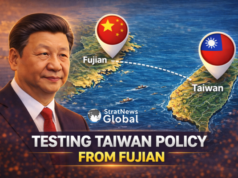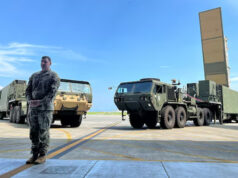NEW DELHI: We can give people a better sense of what’s happening around them at a time of extreme confusion and a motivation to act. Because ultimately, the future is what we make it, says ‘Terra Incognita’ co-author Dr Robert Muggah. Professor Ian Goldwin added, “We are heading for a very dangerous and less prosperous world but if we learn our lessons, we can do much better as individuals, as a global community to gain signposts on what to do and how to do it, to create a better world.”
“Based on decades of research, with state-of-the-art satellite maps and analysis, the authors of ‘Terra Incognita: 100 Maps to Survive the Next 100 Years’ (book and dvd) chart humanity’s impact on the planet and the ways in which we can make a real impact to save it, and to thrive as a species.” With data presented through time-lapse graphics, they discuss COVID-19 and globalisation, the impact of sea level rise on cities around the world, immigration and why fears in the West are a myth, and the reality about inequality by tracing the paths of peoples, cities, wars, climates and technologies, on a global scale.
“We live in extremely confusing times,” Ian Goldin, Professor of Globalisation & Development, Oxford University told StratNews Global Associate Editor Amitabh P Revi. “By using maps, visualizations, satellite images and figures, we try to create ways of understanding of how we got to where we are today and where we are going.” By better understanding the past and the present, he pointed out, “we can better anticipate and make a better future.”
“Maps are an ancient impulse, from the days of cave-walls,” Dr Muggah, co-founder of the ‘think and do-tank’ Igarapé Institute said, explaining how so much has changed since then, with “the maps (in the book) produced by Carnegie Mellon University’s Create Lab, which is a group of robotics, aerospace and artificial intelligence engineers”. “By making available thousands of data sets, we hope to create a better understanding and awareness of our past, present, and hopefully a helpful guide to our future.”
The 'Eye' of the story not the 'I' of the story. That's Amitabh Pashupati Revi's credo from the beginning of his professional journey in 1995. From conflicts in the war zones of Afghanistan, Syria, and Iraq to nuances of international politics in the Maldives,Thailand, and South Sudan, Amitabh has reported from all the world's continents, except for Antarctica(so far). Though, he has documented the world's third pole, the Siachen Glacier!
Amitabh reports and produces documentaries on the two-front China-Pakistan threat to India. His ground reports from Arunachal Pradesh and Ladakh have received viewership in the hundreds of thousands. Amitabh has interviewed world leaders, top global analysts, and experts in India, Russia, the United States, and Australia as well. Along the way, he’s picked up the Russian language, the Ramnath Goenka Award for his reporting on the 'Islamic State' terrorist group in Iraq, the Khaled Alkhateb Award for his reporting from Palmyra, Syria, and the UN Dag Hammarskjöld Distinguished Journalist Fellowship. Last but not least, as a founder member of StratNews Global, Amitabh helps lead the reporting, editorial, production, and administration teams at StratNews Global, BharatShakti, and InterStellar on their journey ahead.




